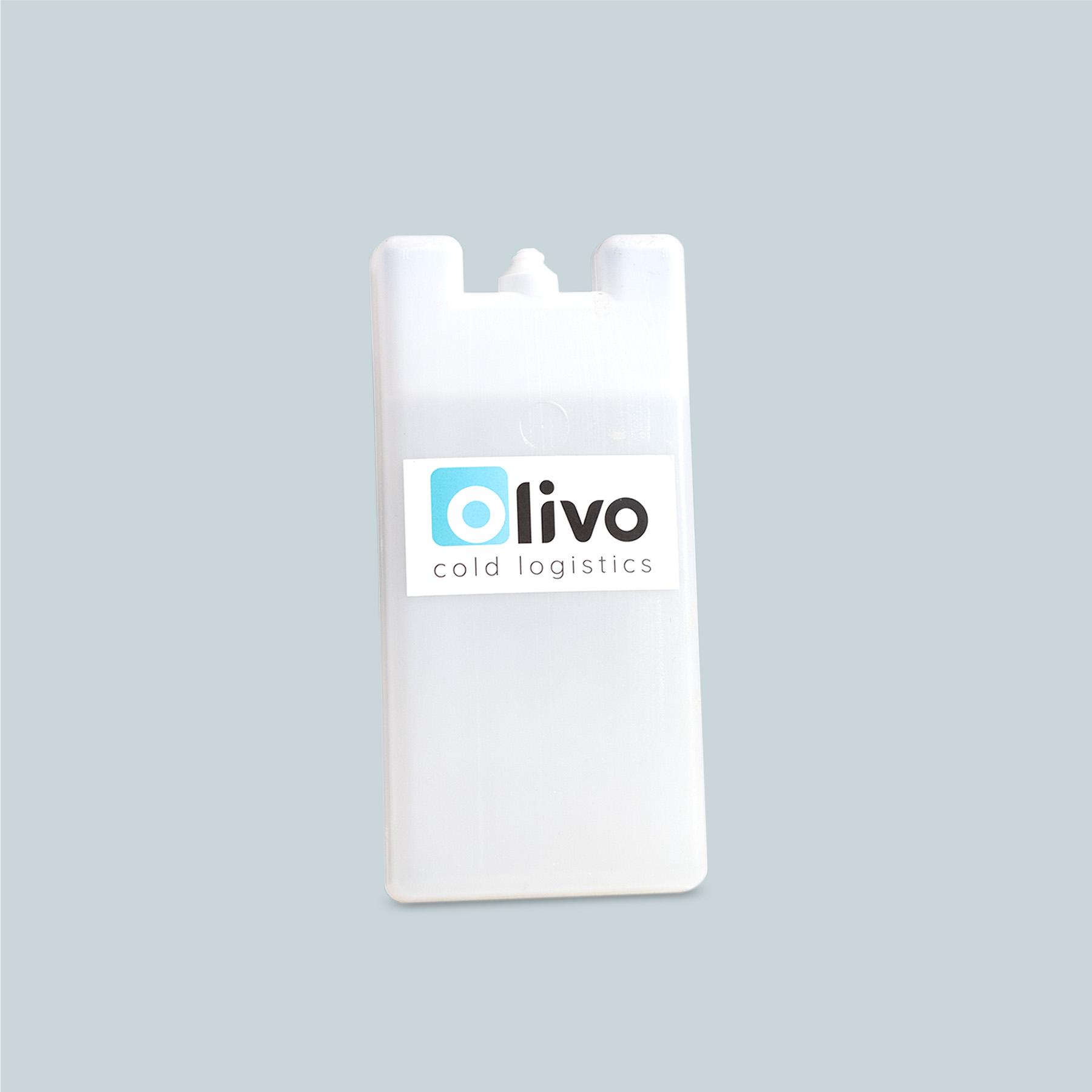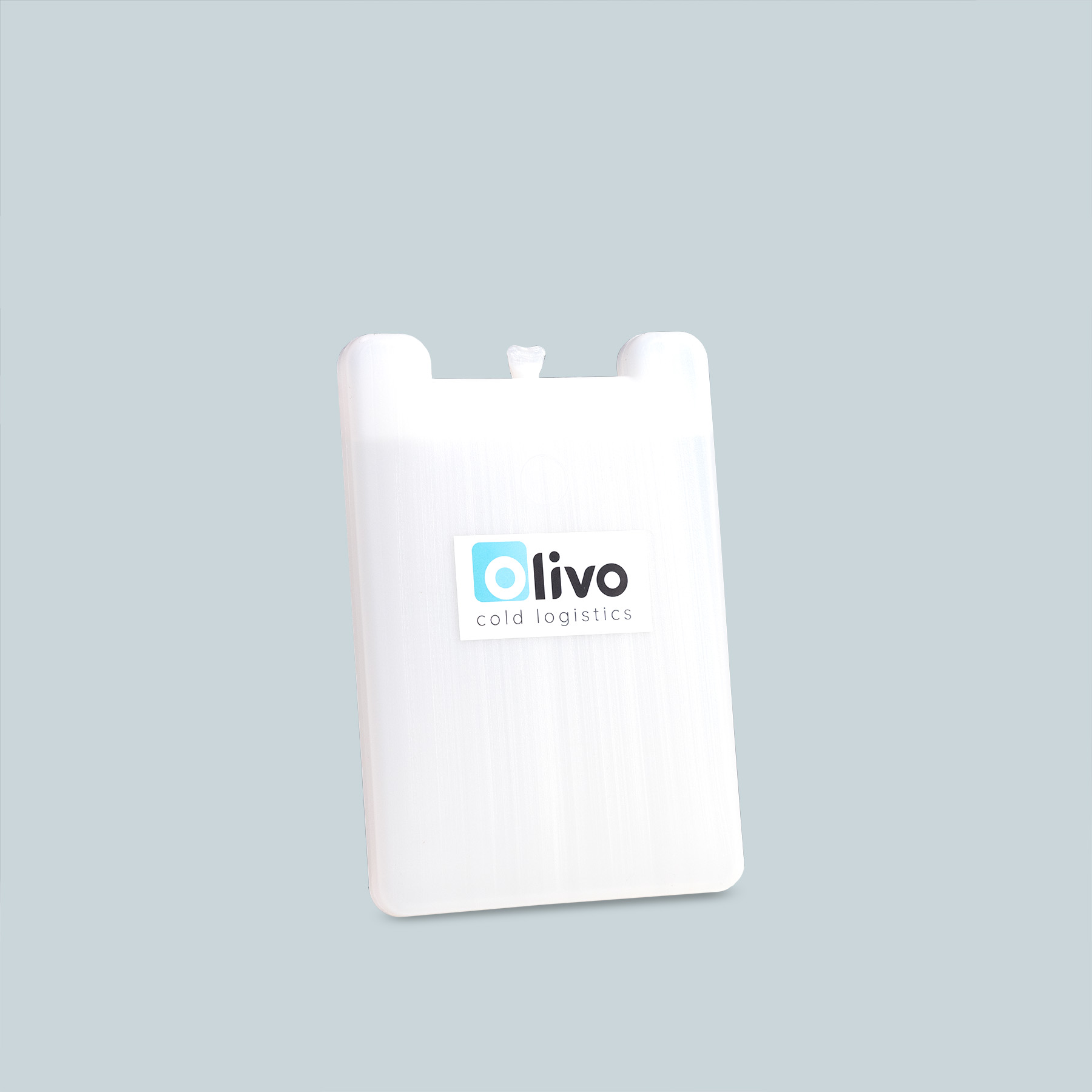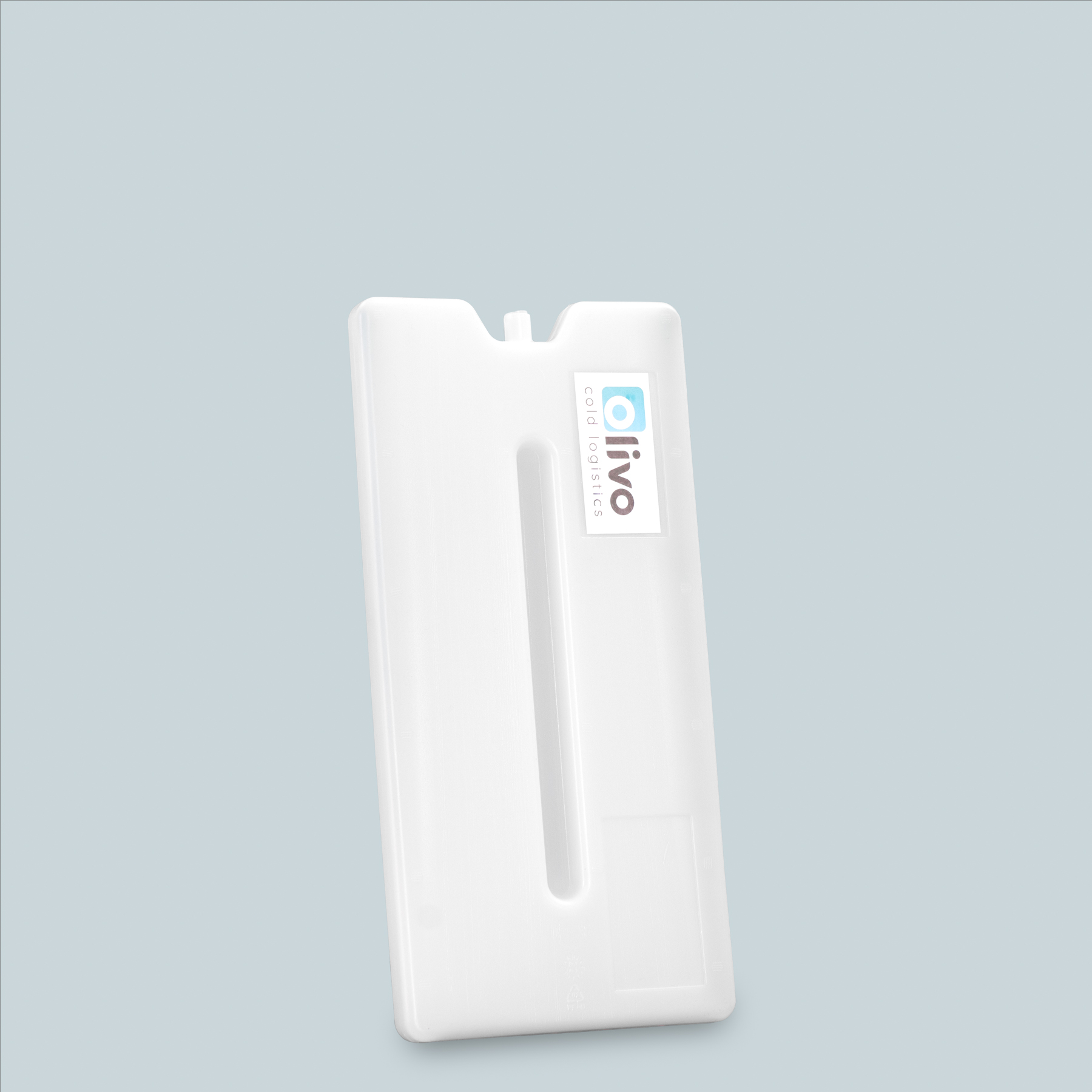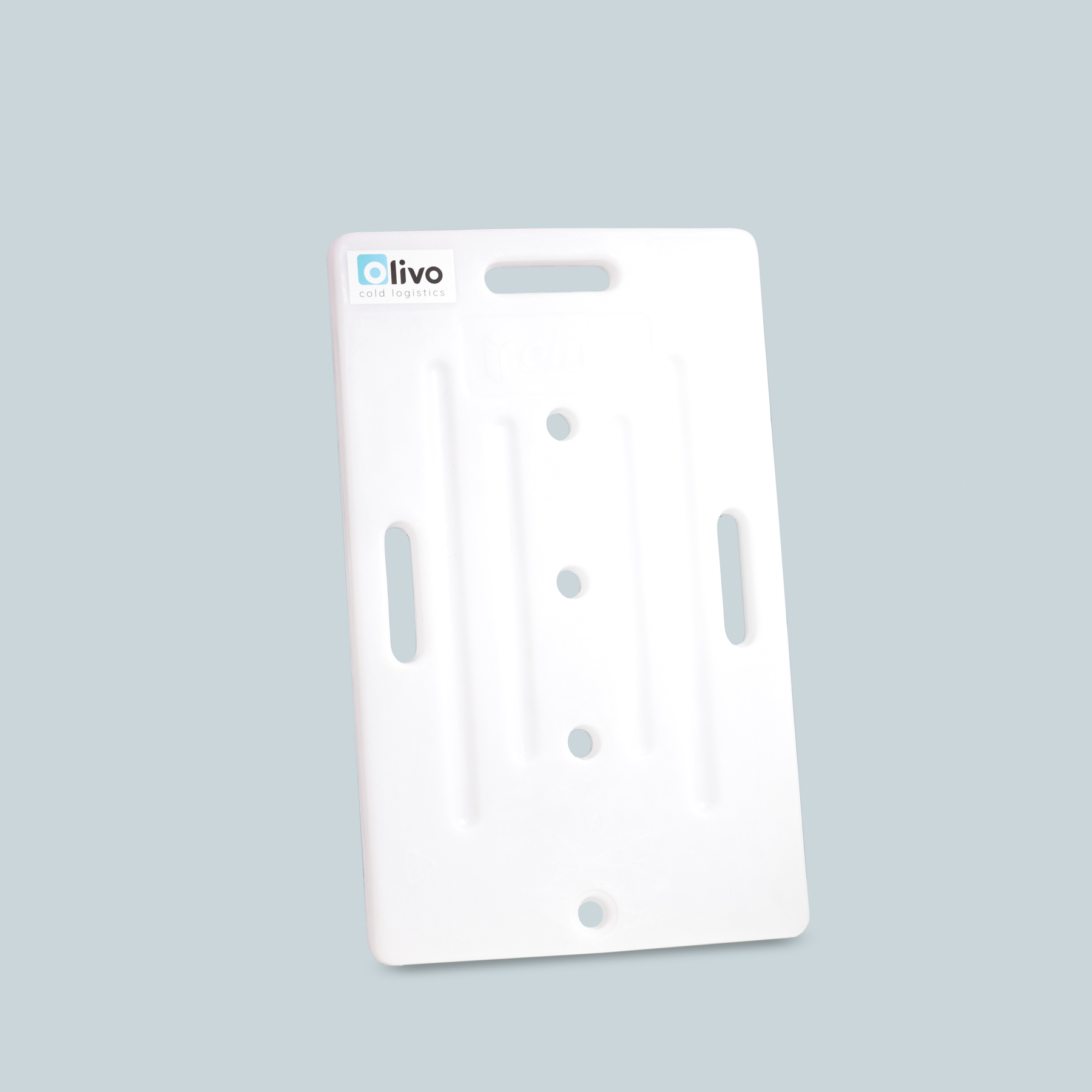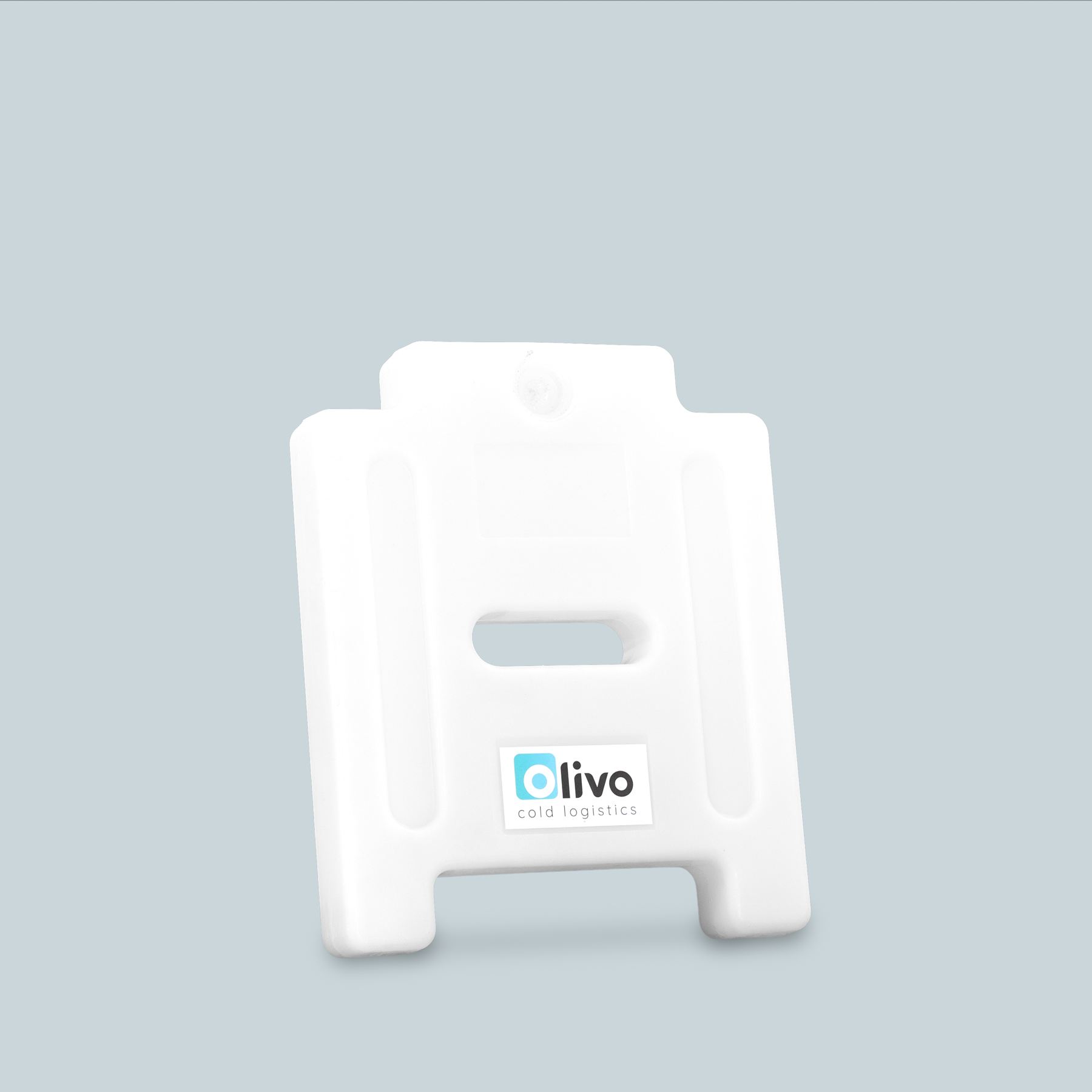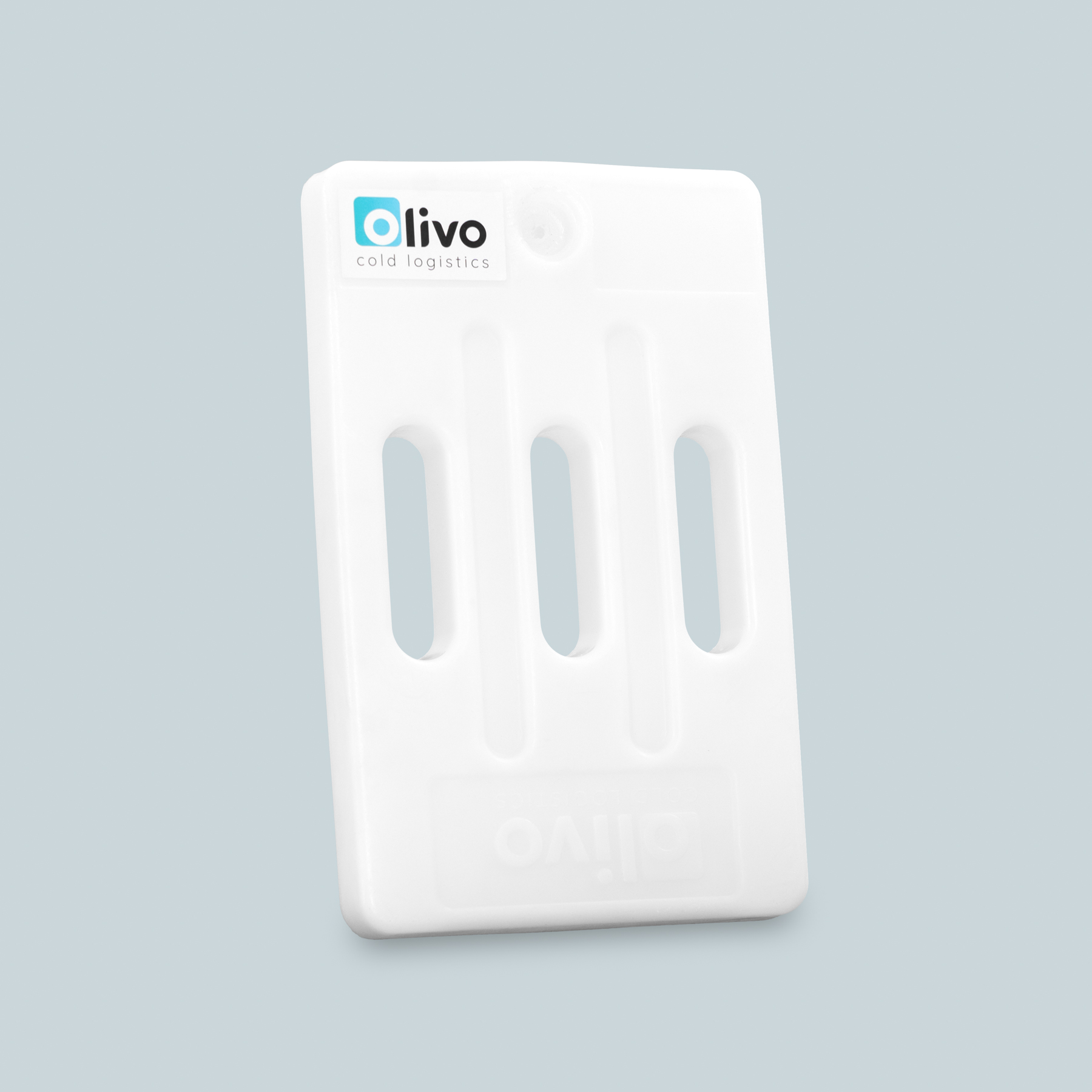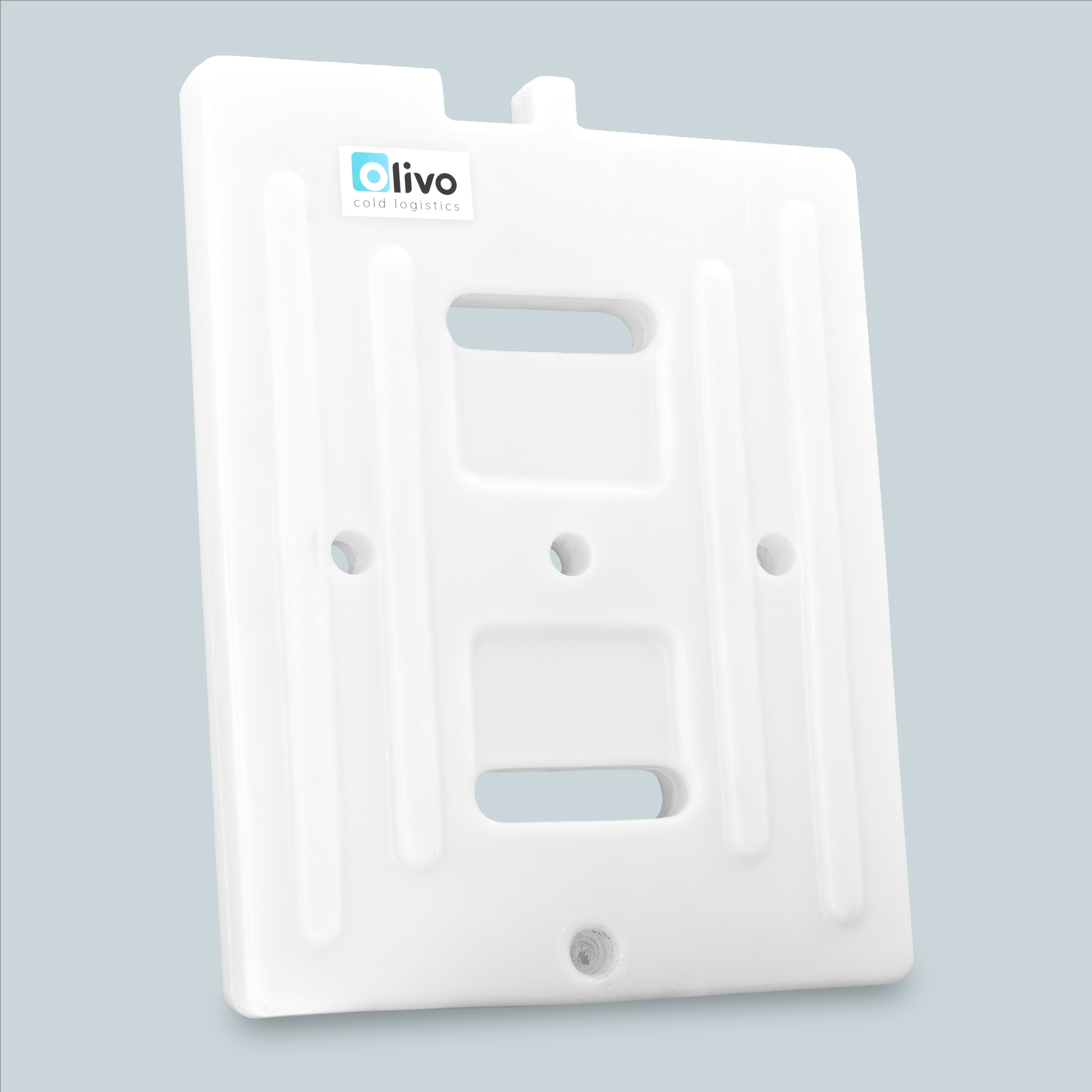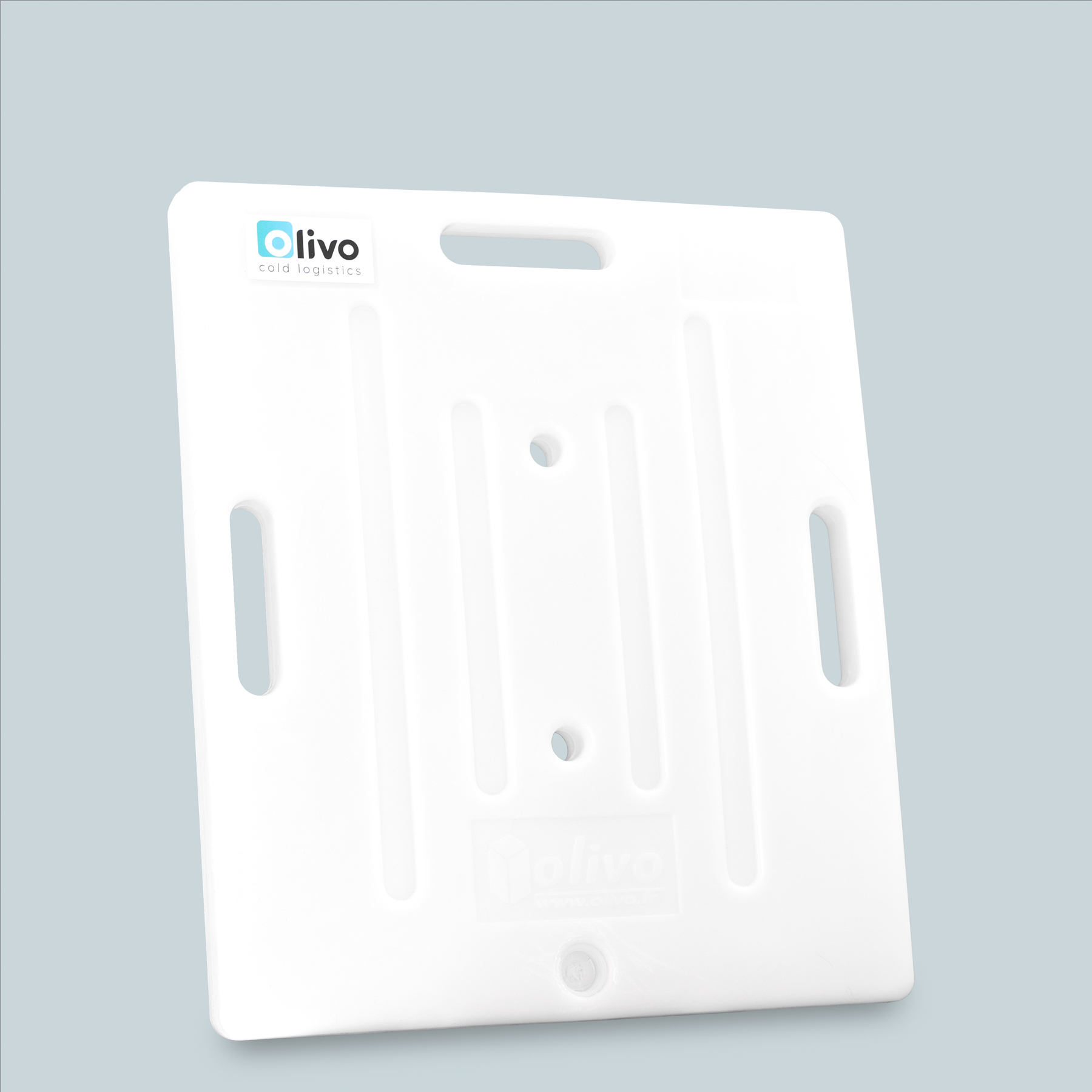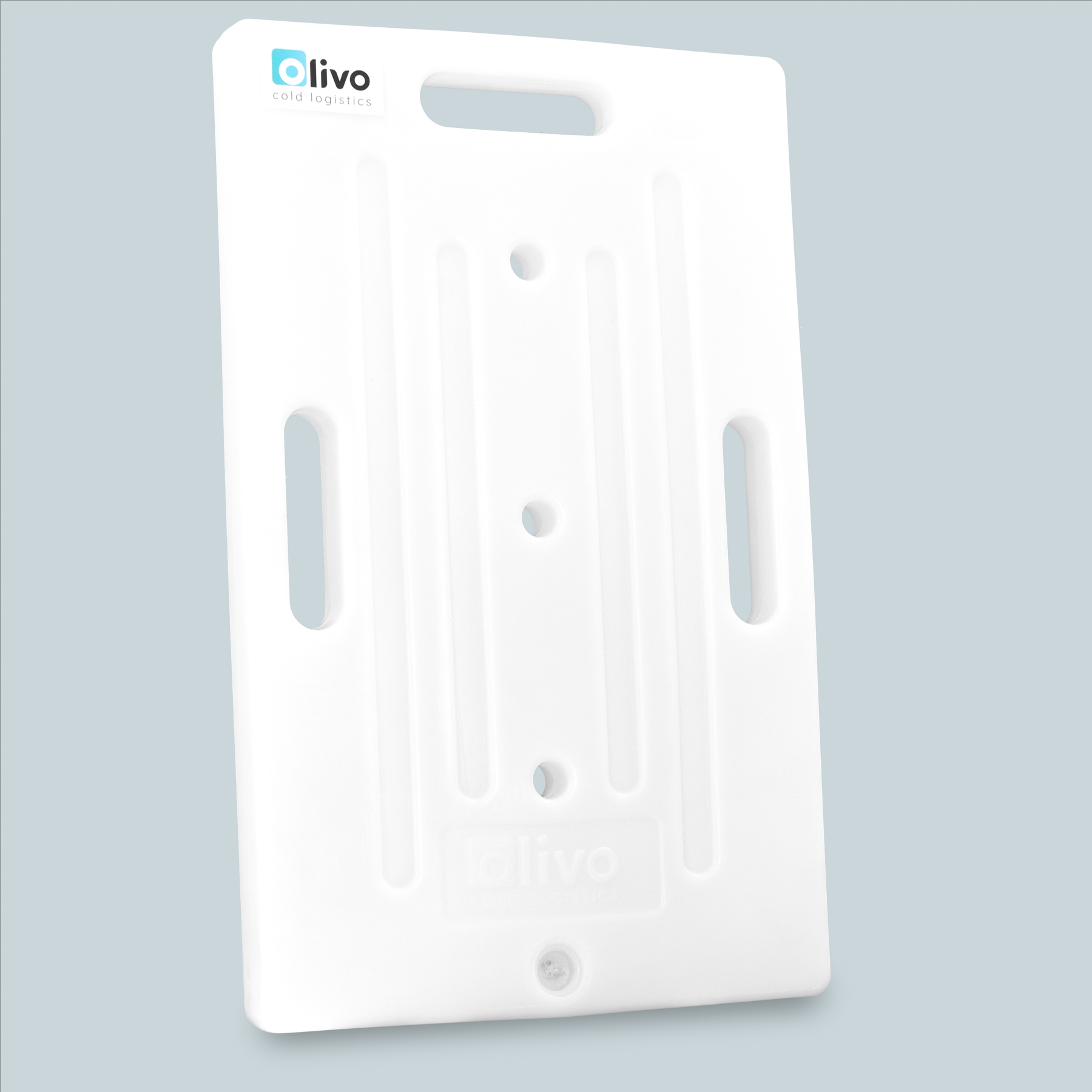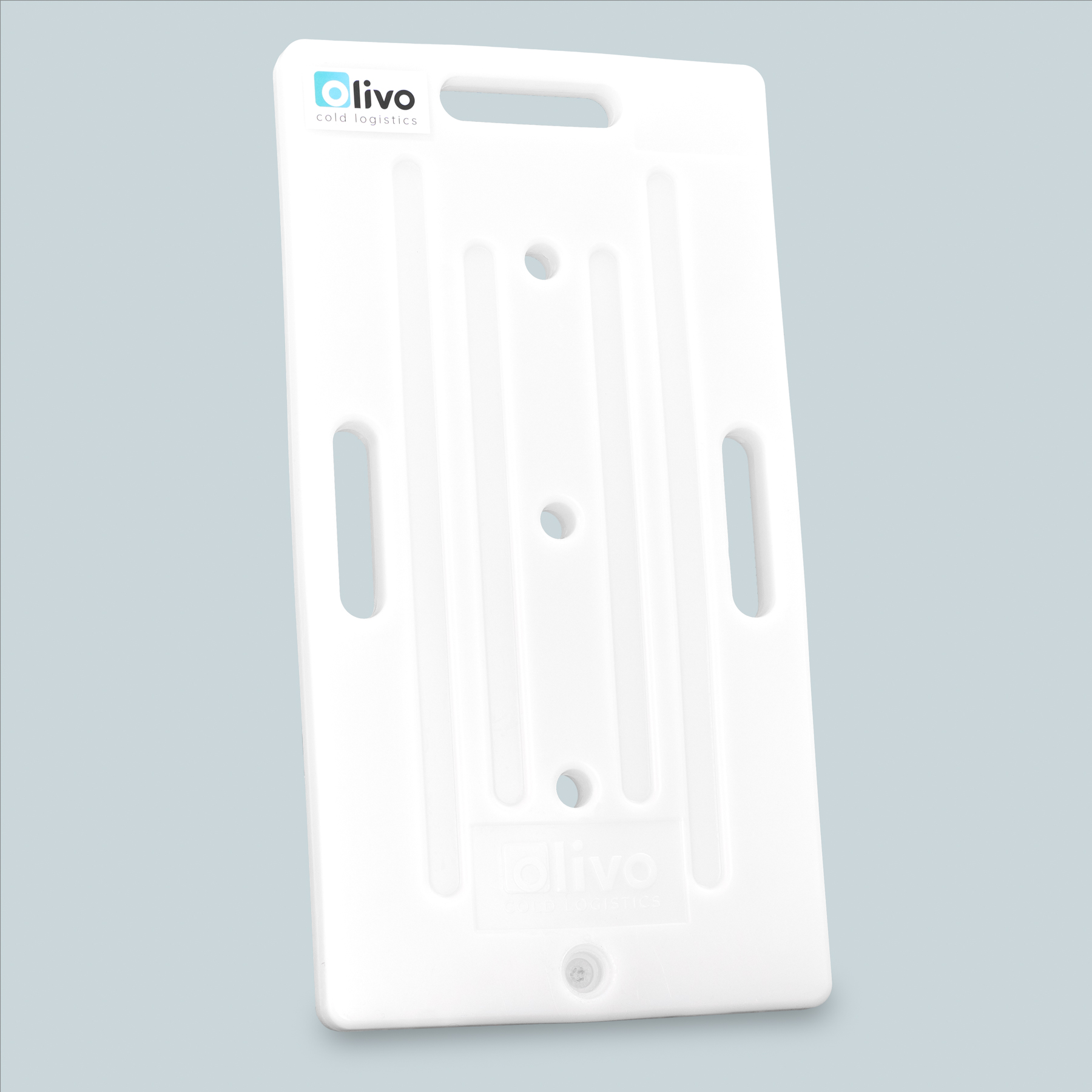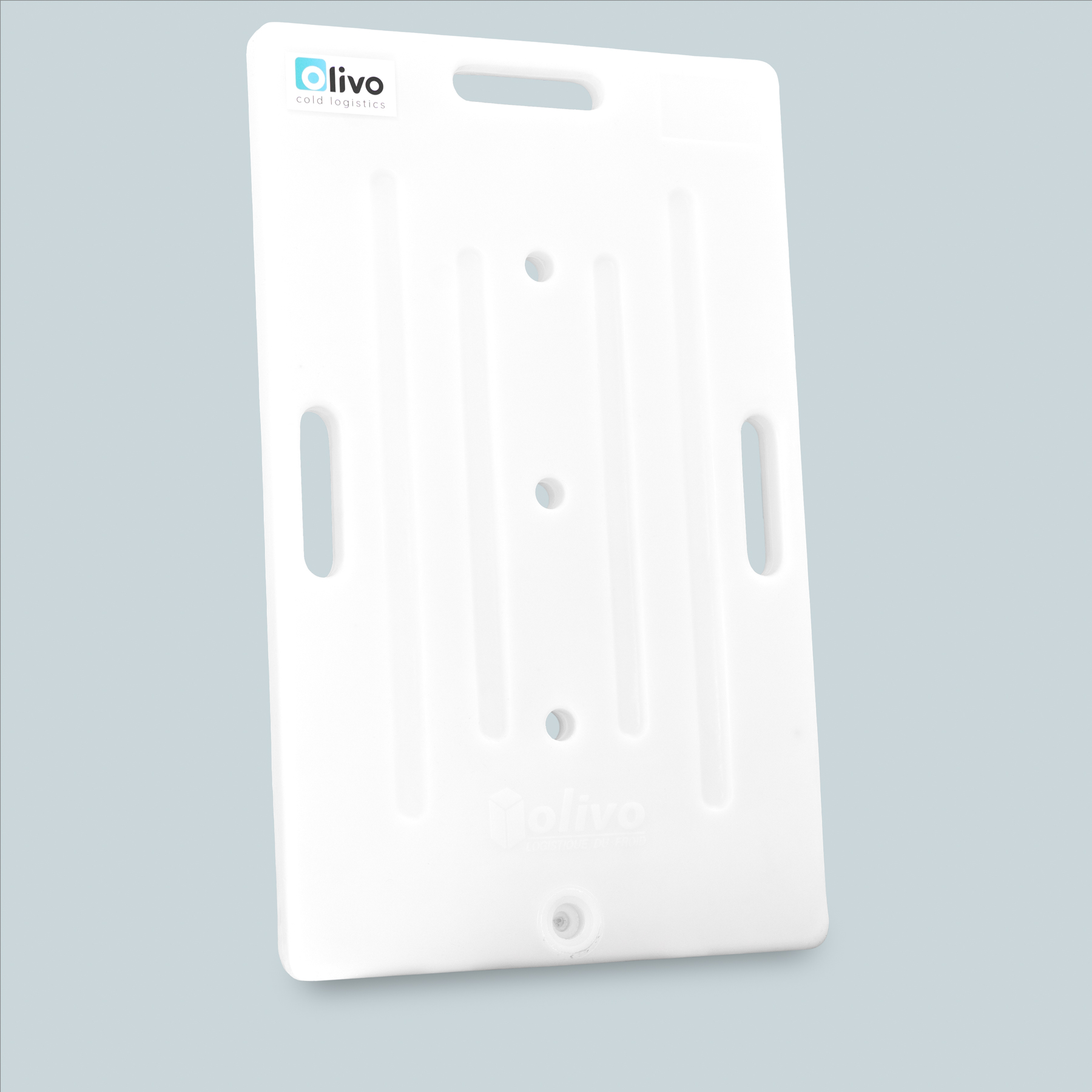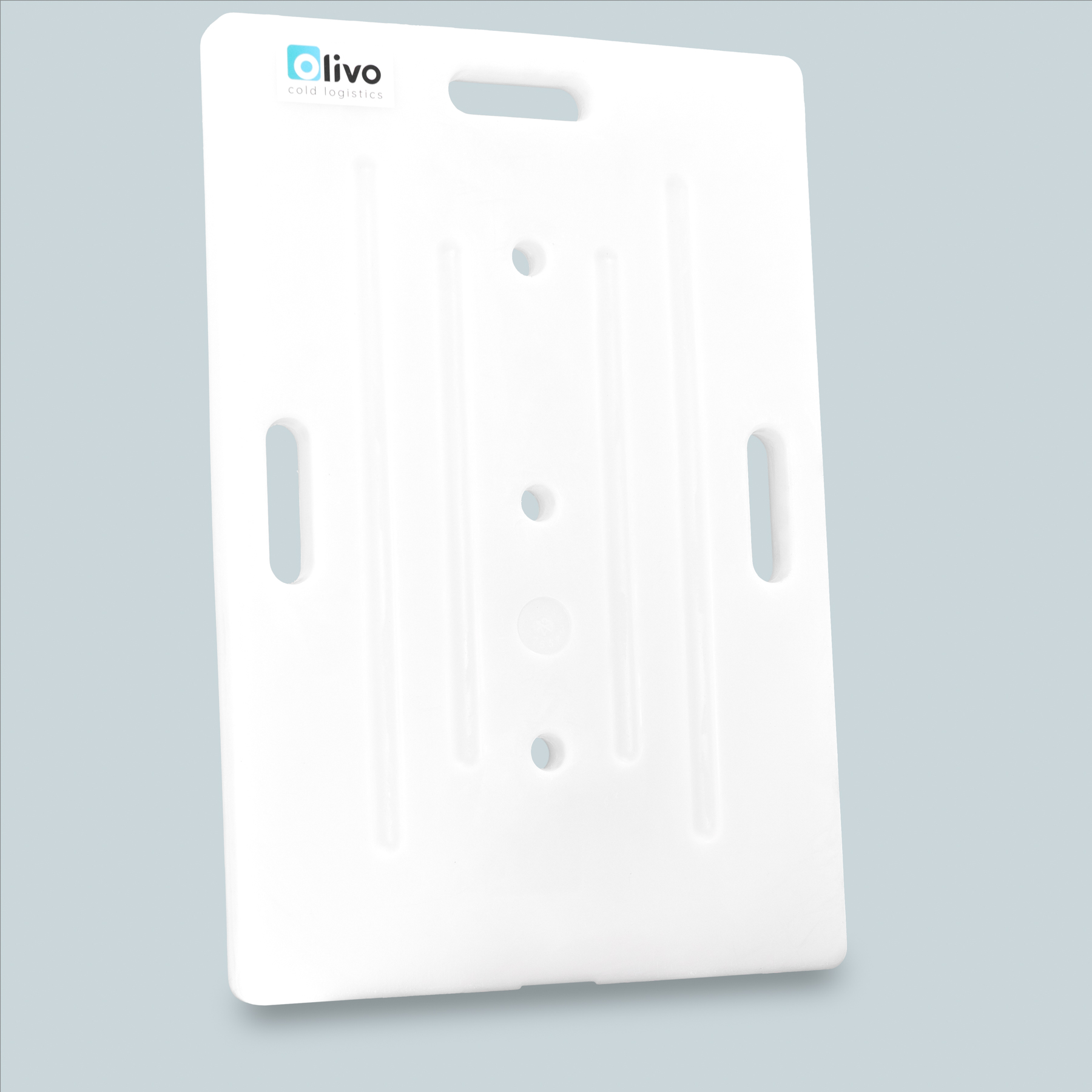Professional cold accumulator
What is a cold accumulator?
A cold accumulator is a piece of equipment used to keep temperature-sensitive products at the right temperature, cool or hot/warm, in containers or cool boxes. They contain different types of eutectic liquid, each with its own properties and specific uses:
- Storage/transport of chilled goods in cardboard boxes
- Storage/transport of frozen goods
- Storage/transport of ambient goods
- Storage/transport of hot or warm goods
A heat transfer process by latent heat allows the absorption, storage and release of energy.
Our range of cold accumulators / eutectic plates

Cold acccumulators and eutectic plates
There are many different cold accumulators available on the market, which means that it is not always easy for a professional to evaluate what is on offer and choose an effective cold accumulator for their type of delivery (food contact, pharmaceutical products, etc.).
Cold accumulators are referred to by many different names. Terms like cartridge, plate, block, briquette, pack or gel may be used. These terms are generally associated with a word like cold, eutectic or refrigerant. Cold is released to maintain goods at a constant temperature, depending on the journey time and type of stock.
Olivo only produces professional cold accumulators and calls them eutectic plates.
How do professional cold accumulators work?
The use made of cold accumulators by private users is simple: they are used to keep foodstuffs cool in their packaging in a cool bag box or picnic basket for a few hours at a time. This type of ice pack is usually filled with water, quite well sealed and comes in a wide variety of sizes and weights. They are mainly used by private consumers as their performance is limited.
A professional cold accumulator contains a eutectic liquid and offers far better performances in terms of duration and temperature quality. The pro cold accumulator is distinguished by more complex characteristics, which can be adapted to customers’ specific needs.
1. Temperature
The temperature released by the accumulator will be chosen according to the target temperature. Temperature-sensitive healthcare products and chilled or frozen foodstuffs naturally have different storage temperatures.
The temperature of a cold accumulator depends on the melting point of its eutectic liquid. OLIVO propose six melting points for eutectic plates that can produce positive or negative temperatures.
The choice of 7 temperatures provides responses for specific climatic conditions.
For a target temperature of +2°C, the polyethylene (HDPE) accumulator will not have the same melting point when it is for use in a temperate climate as when it is designed for a hot climate.
The melting point is therefore an important characteristic of the professional cold accumulator: it has a direct influence on the temperature quality.
2. Latent heat
After defining the temperature (quality), the next question is the amount of cold to be provided by the accumulator. The cooling capacity depends on the size of the accumulator, namely the mass of eutectic liquid it contains. The latent heat of a cold accumulator is expressed in joules.
Depending on the required duration, one or more cold accumulators may be necessary.
The latent heat provided directly influences the length of the time the temperature will be maintained. This is therefore technical information for qualifying a professional cold accumulator.
3. Melting plateau
Cold accumulators are not all equal even if they have a similar melting point and latent heat. The quality of the melting plateau is often what differentiates a professional cold accumulator.
After it has been frozen for the appropriate length of time, the cold accumulator slowly releases its frigories at a stable temperature which is that of the melting point of the eutectic liquid when it is thawing. We call this the melting plateau.
If we measure the core temperature of a -12°C accumulator in the thawing phase, the temperature curve is flat and continuous at a fixed temperature of -12°C.
A flat, constant plateau improves the temperature quality and the length of time the temperature will be maintained.
This characteristic is tricky to measure, but any good professional should be able to provide you with information.
How to use a cold accumulator?
For optimum use of a cold accumulator, it is necessary to prepare it in a chamber whose temperature is 5°C lower than the melting temperature of the plate.
There is a specific cold accumulator for each type of product. The recipes for the eutectic solutions are custom made, so it is not possible to use the same cold accumulator to transporter or store chilled goods and frozen goods.
Olivo standard for freezing eutectic plates and maintaining their temperature:
- Frozen goods -18°C (C 18)=> -20°C eutectic plate
- Chilled goods +2°C/+4°C= -3°C eutectic plate
- Chilled goods +2°C/+8°C= 0°C eutectic plate
- Ambient goods +15°C/+8°C= +21°C eutectic plate
We might, for example, choose a -21°C cold accumulator to transport chilled foodstuffs, thinking that we can “boost” the system and increase the storage time. This is a practice that risks degrading the foodstuffs by freezing them and will not necessarily provide more time for delivery.
Get in touch – Olivo’s advisors will be able to answer your questions and guide you through the thermal analysis of your needs before your place any orders. A study of your project will allow us to provide the best answer to your needs. Free delivery of test products. Professional prices excluding VAT.
What fluid do cold accumulators contain?
A cold accumulator contains water, mineral salts and cooling media. Be aware, though, that their composition is not identical from one brand and type to another (gel packs, ice packs, etc.). The Olivo eutectic solution is a recipe that we have developed in house, which is not universal. Which is why our products are so popular with logistics operators.
Our solutions of insulated containers
Cold sources designed for your containers

